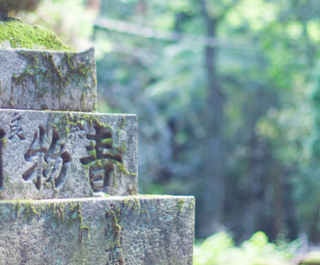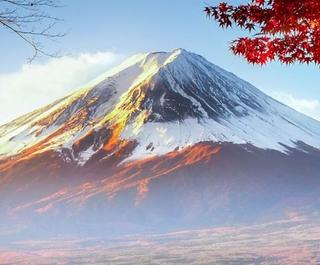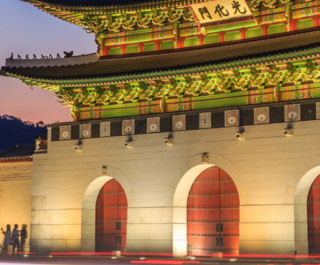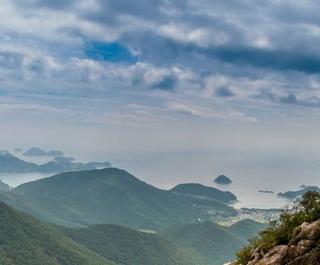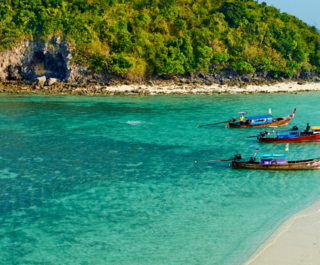
It was early morning in Kanazawa’s historical Higashi Chaya district, a row of old latticed teahouses in a town that’s convoluted in both its layout and history. Steam wafted up from the stone road.
A geisha scurried across the empty street like an alley cat, only the clicking of her wooden geta sandals giving her away. Yet I didn’t come here looking for geisha. I wanted to learn about the world of another Japanese icon: the samurai.
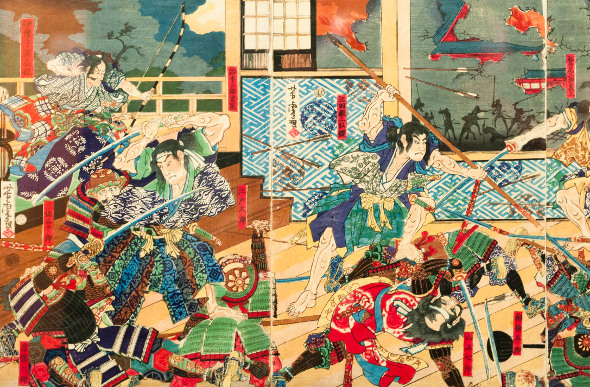 Samurai have been revered in Japan for centuries, depicted on countless works of art. Image: Getty
Samurai have been revered in Japan for centuries, depicted on countless works of art. Image: Getty
.........................................................................................................................................................
The City Of Samurai
.........................................................................................................................................................
Located between the Sea of Japan and the Japanese Alps in western Japan, Kanazawa is considered one of the country’s best places to learn about samurai history. The town was spared from destruction during World War II and remains one of the best-preserved castle towns of the Edo Period.
It’s one of the only cities in Japan to still have a samurai district. Of course, samurai were abolished in the late-19th Century as Japan modernised, so you can’t find samurai here today. But much of their world remains.
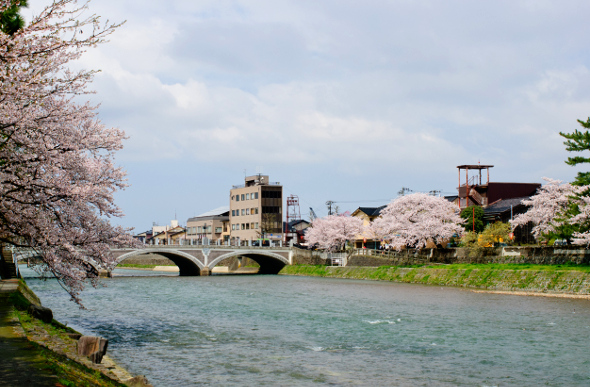 Cherry blossoms along the water in Kanazawa. Image: Getty
Cherry blossoms along the water in Kanazawa. Image: Getty
Making the 473-kilometre trip from Tokyo to Kanazawa used to take five hours and require changing trains. But the trip just got much easier. Starting March 14, 2015, the new, direct Hokuriku Shinkansen (bullet train) run by West Japan Railway Company cut the travel time in half. And like the slower trains, it arrives at Kanazawa Station, often listed as one of the world’s most beautiful.
I’d always been fascinated by samurai, those warriors who were almost inhumanly stoic and ever willing to fall on their sword for their masters or slay anyone showing disrespect. At least, that was how I’d imagined samurai to be, thanks to films like The Last Samurai and 13 Assassins. I was about to learn there was more to their story.
.........................................................................................................................................................
Into The Rabbit Hole
.........................................................................................................................................................
On my first morning in Kanazawa, I made a beeline for the neighbourhood of Higashi Chaya and met Kiyoe Nagashima, a 6th-generation resident and Kanazawa Excursions guide. The pounding of a taiko drum in a nearby temple filled the air, summoning the feeling I often have when in a foreign place: of following the city’s beating pulse.
“Kanazawa is not a place for theme parks, but a place for living,” she said, her face beaming with pride. In fact, for the most part, the city is a modern metropolis dotted with luxury shops such as Louis Vuitton. Higashi Chaya, however, is anything but modern.
Following Nagashima into the labyrinth of teahouses, temples and restored samurai houses, I felt like Alice slipping into the rabbit hole. We walked along the row of beautiful latticed buildings and turned down a narrow street lined with yellowing gingko trees. Then we careened up a steep path that was so slender and discreet, I thought we were trespassing in a private driveway.
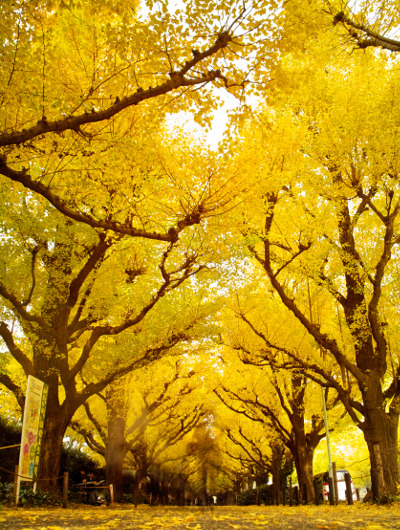 The yellow gingko trees lend Kanazawa a vibrant appearance. Image: Getty
The yellow gingko trees lend Kanazawa a vibrant appearance. Image: Getty
Want to see the cherry blossoms? Best Places In Japan To View Cherry Blossoms
Summer in Japan. Soaking Up Summer Days In Japan
When we arrived at the top, however, the path branched out into more narrow, winding roads. Kanazawa’s streets were partly designed to mislead and disorient outsiders, and I was learning firsthand, they do so effectively.
From the top of the hill, we walked into the adjacent neighborhood of Utatsuyama. Samurai once lived in Buddhist temples here, Nagashima explained, working as security guards called boukan. The roofs of the stately wood buildings with detailed carvings sprouted from clusters of gingko and maple trees.
Nagashima made it clear that the samurai who flourished in this city during the Edo Period (1603-1868) were almost nothing like the ferocious warriors I’d imagined them to be.
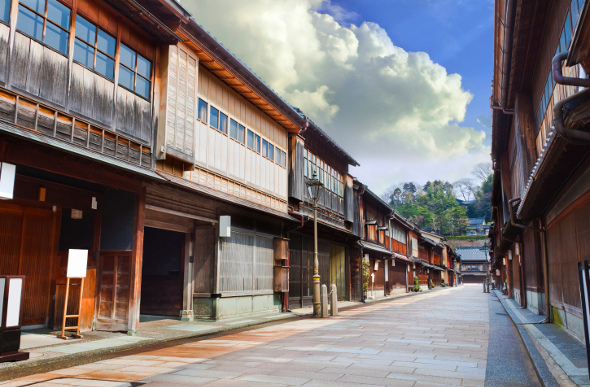 Local residences in modern Kanazawa don't look that much different from when Samurai roamed the streets. Image: Getty
Local residences in modern Kanazawa don't look that much different from when Samurai roamed the streets. Image: Getty
During this peaceful golden age, the feudal military class focused most of its energy on scholarly pursuits and craftsmanship. As the highest social caste during this time, the samurai built extravagant residences and opulent gardens behind thick, earthen walls; you can still see evidence of the walls today.
Of course, most samurai in Japan never lived this luxurious, peaceful lifestyle. The refined samurai of Kanazawa were an anomaly, made possible by their ruler’s disinterest in violence and affection for the arts.
.........................................................................................................................................................
The Homes Of The Samurai
.........................................................................................................................................................
Kanazawa’s largest architectural relic of the samurai age is the stunning white Kanazawa Castle, resting on a hill that offers 360-degree views of the city. The castle was built in the 16th Century by the Maeda family, the beloved rulers of Kanazawa until 1868.
During the Maeda’s rule, the castle was their fortress, surrounded by a moat and stone wall that still stands today. The castle's striking white tile roof is made of weathered lead. Adjoining the castle, the Kenroku-en garden is home to plum, cherry, and Japanese maple trees and is considered one of Japan’s finest gardens.
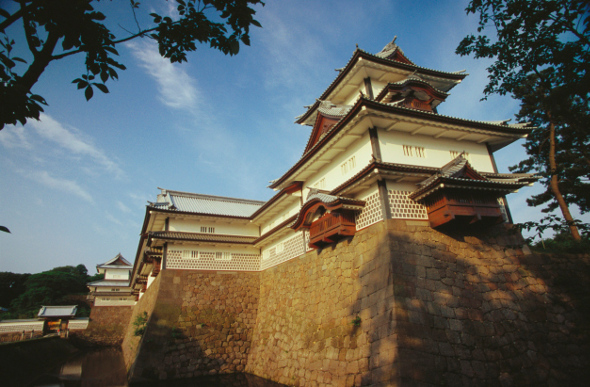 A small section of the large Kanazawa Castle complex. Image: Getty
A small section of the large Kanazawa Castle complex. Image: Getty
We continued on to the Nagamachi neighborhood, which was once home to upper- and middle-class samurai. Many of the original houses were torn down during Japan’s industrial revolution. Still, the district’s cobblestone streets, towering mud walls and peaceful canal remain, and a couple of restored samurai houses are open to the public, including the Nomura House, which contains artifacts from its namesake family.
I returned to the Nomura House the following day and strolled inside, expecting to find swords, armor and perhaps some paintings immortalising moments of triumphant battles. Instead, I was greeted by a koi pond and zen fusuma – or painted rice paper panels – created by the Maeda family’s personal artist.
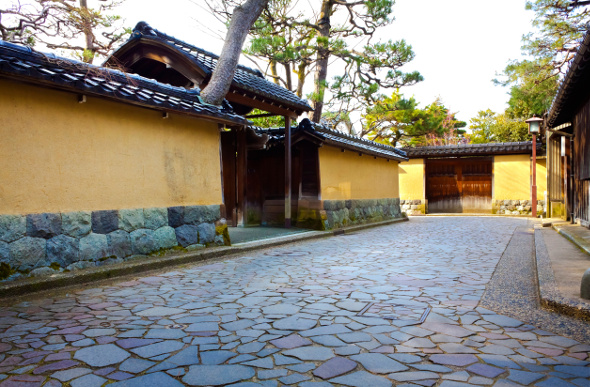 Residences in the Nagamachi Samurai District. Image: Getty
Residences in the Nagamachi Samurai District. Image: Getty
Then I recalled something Nagashima had said on the tour: “To defend Kanazawa, the Maeda clan encouraged the samurais to focus on arts and craftsmanship instead of fighting. That way they did not pose a threat to the clan with the highest power, and so were not invaded. As a result, there was actually almost no fighting in Kanazawa for 400 years.”
Maybe that was the real lesson of Kanazawa’s samurai. Their greatest weapon was not the sword but their focus on the arts – a sly defense tactic in disguise.
.........................................................................................................................................................
Visit your local Flight Centre or call 131 600 for more advice and the latest deals on travelling to Japan.
.........................................................................................................................................................
This article was written by Jenna Scatena from BBC and was legally licensed through the NewsCred publisher network.


